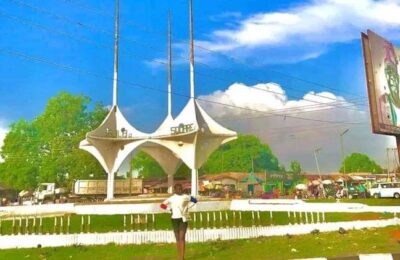Governor Ahmed Usman Ododo’s flag-off of the Idah Township Road Project was more than a political ritual; it was a calculated gesture aimed at restoring confidence in a region long plagued by infrastructural neglect. Standing before the Atta of Igala and a gallery of local dignitaries, the Governor extended a symbolic olive branch to Kogi East—a land too familiar with delayed development and ceremonial speeches. The mood in Idah was electric, yet restrained; like a people who have danced to the drumbeat of promises too many times to be easily moved.
Yet the ripples of the day carry more questions than answers. While the township road is a welcome initiative, it does not erase the conspicuous absence of the long-promised Idah-Agenebode bridge—an emblem of stalled dreams and political inertia. For years, the East has heard tales of this mythical bridge, a corridor meant to connect not just geography but economies, cultures, and futures. It remains, however, a ghost in government papers, a vision deferred, and in the words of Scripture, “Hope deferred makes the heart sick” (Proverbs 13:12).
Governor Ododo’s presence in Idah could have been a turning point—a sacred moment to reclaim the narrative and chart a new direction. Instead, it leaves the region hovering between optimism and caution. The people are not hungry for ceremonies; they yearn for substance. Roads that begin but do not end, bridges that are spoken of but never seen, and contractors who disappear like shadows after dawn—these are the wounds that haunt Kogi East.
The Atta of Igala, silent yet observant, symbolizes the ancestral weight of Igala history. His presence is not decorative—it is declarative. It says: “We are watching.” In Igala tradition, silence can be more piercing than speech. It poses a quiet interrogation: Is this another performance, or the prelude to transformation? Governor Ododo must answer, not with rhetoric, but with steel and stone.
The strategic importance of the Idah-Agenebode bridge cannot be overstated. It is not merely an infrastructure project—it is the spine of regional integration. Its construction would recalibrate commerce between Kogi and Edo, restore cultural ties, and revive the spirit of a people fractured by decades of political marginalization. For a Governor who wishes to be remembered as more than a placeholder, this bridge is a test of vision and courage.
To govern the East is to court a people of memory, culture, and grit. The Igala have endured the erosion of political relevance and watched their sons trade heritage for handouts. Yet they remain expectant—not because they are gullible, but because they believe in the redemptive power of sincere leadership. The Governor’s task is not to impress, but to implement. A road is only a promise fulfilled when it leads somewhere greater—when it touches lives, unlocks potential, and honours the past.
In the end, the question remains: Will this flag-off be remembered as a moment of renewal or another chapter in the book of broken promises? The East waits—not with arms crossed in cynicism, but with eyes wide in cautious hope. And as an Igala proverb warns, “A journey without a destination is merely wandering.” Let this not be another wander. Let it be the path that finally leads home.
– Inah Boniface Ocholi writes from Ayah – Igalamela/Odolu LGA, Kogi state.
08152094428 (SMS Only)




